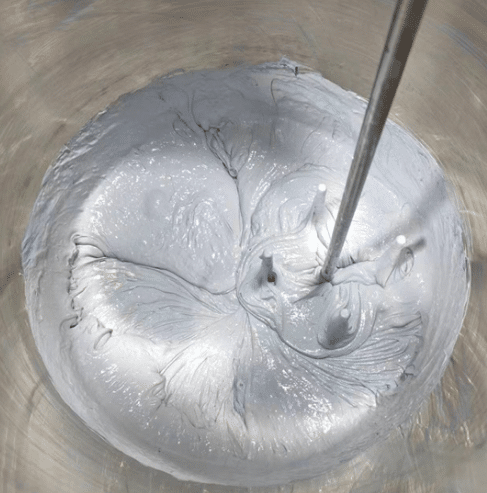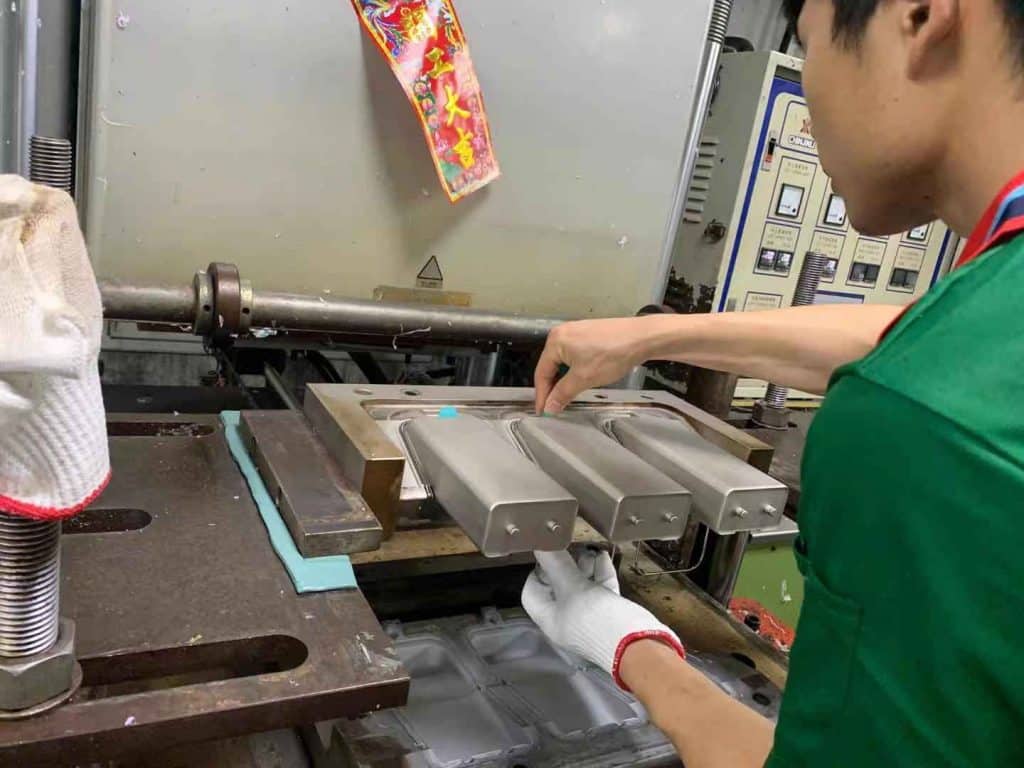A complete analysis of silicone rubber mixing technology: from formulation to process, improving product texture and performance
Silicone rubber is widely used in many high-end fields such as kitchenware, seals, medical devices, and baby products. One of Its key performances comes from the sophisticated formula mixing process. By optimizing the mixing equipment, process, temperature and sequence, the physical properties, stability and surface quality of the material can be significantly improved, further affecting the downstream performance. Today, we deeply analyze the silicone rubber mixing technology, from feeding to vulcanization.
What is silicone rubber mixing technology?
Silicone rubber mixing technology is a technology that uses mechanical shear force to evenly mix silicone rubber raw rubber and compounding agents (such as white carbon black, silicone oil, vulcanizer, etc.) through an open mill or kneader to form a rubber compound with specific properties. This technology uses the phase changes of silicone rubber at different temperatures (elastic state, granular state, plastic state) to achieve effective dispersion of fillers, ultimately improving the mechanical properties and processing characteristics of silicone products, and ensuring consistent subsequent molding and vulcanization performance.

Silicone Rubber Mixing Process
Why is high-quality Silicone Rubber Mixing so critical?
The key to high-quality silicone rubber mixing is mainly reflected in the following aspects:
Performance optimization
The mixing process precisely controls the temperature, time and speed to fully integrate the silicone rubber base material and filler (such as white carbon black, silica powder), significantly improving the material’s high temperature resistance (up to 250°C), anti-aging and electrical insulation properties. For example, the optimized mixed silicone rubber can still maintain stable electrical properties under high temperature and high humidity conditions, and is suitable for insulation materials for power equipment.
Process synergy
The mixing process directly affects the uniformity and processing performance of the material. Properly extending the mixing time can improve the uniformity of filler dispersion, but excessive heating should be avoided to cause molecular chain breakage. Reasonable temperature control (such as double-roll mixing closed operation) can also reduce the escape of volatile substances and ensure material safety.
Application adaptability
For the extreme environmental requirements of industries such as automobiles and electronics, mixed silicone rubber needs to take into account both thermal stability and safety. For example, engine compartment seals need to withstand high temperatures above 200°C for a long time, while materials for medical equipment require low volatility and non-toxic properties. Precise mixing can balance the performance requirements of different scenarios.
High-quality mixing is the key link to ensure the performance of silicone rubber products. The main reasons are as follows:
Uniform dispersion of compounding agents
Mixing disperses compounding agents (such as carbon black, fillers, vulcanizers, etc.) evenly into the silicone rubber matrix through mechanical shearing and friction, avoiding local concentrations that are too high or too low, resulting in unstable material performance. By reducing the molecular weight of rubber (plasticization) and mixing plasticizers, softeners and other additives, the plasticity and fluidity of the rubber compound are improved, which is convenient for subsequent molding processing.
Improve processing efficiency: reduce bubbles and structuring in silicone rubber products, improve fluidity, reduce defects, and avoid problems such as bubbles, white edges, and scorching caused by coarse material mixing.
Improve the quality of finished products
The mixing process directly affects the physical properties of silicone rubber products (such as tensile strength, wear resistance, oil resistance, etc.). For example, the internal mixer ensures that the pigment is fully combined with the substrate by precisely controlling the temperature and speed, avoiding uneven particles or poor dispersion that cause surface defects in the finished product. Improve mechanical strength, aging resistance and insulation.
Add customized functions: flame retardants, high temperature resistance, chemical resistance and other regulators can be added to achieve the product effects that customer’s needs.
Who is most concerned about silicone rubber mixing technology?
The silicone rubber processing industry is most concerned about mixing technology, especially in the sub-sectors of medical silicone products and baby silicone products.
Therefore, the formulation engineers in the silicone rubber processing industry optimize the ratio to achieve the designed physical properties.
- Process engineers in the silicone rubber industry: need to determine equipment and process parameters.
- Purchasing/managers in the silicone rubber products industry: balance production capacity and quality investment
- Silicone rubber product brands: focus on product stability and certification capabilities.
Z.S. R’s team work with the different industries brand’s Owners, products development managers, products managers, products designers together and offer them OEM ODM solution from molded silicone products design, prototyping to silicone products contract manufacturing, printing, package to ensure their silicone projects success.
Contact Z.S.R to create your unique and competitive silicone products for your business.
Custom Silicone Products | OEM/ODM Service
When you need silicone mixing?
- Primary mixing: Add fillers and structural additives in an open mixer or kneader;
- Mixing of additives and catalysts: Addition of vulcanizers, flame retardants, etc. requires strict temperature control;
- Remixing before molding: Finally adjust fluidity and improve demolding performance.
What scenarios is mixing technology suitable for?
How to control the quality of silicone rubber mixing?
Controlling the quality of silicone rubber mixing requires starting from raw material control, process optimization, environmental management and other aspects:
Raw material quality control
Raw material screening: Prioritize qualified raw rubber with volatile matter ≤0.5%, hardness deviation ±2 Shore A, Mooney viscosity 4 0-60 MU, and medical grade must pass ISO 10993 biocompatibility test.
Additive ratio: Masterbatch addition error ≤0.3%, anti-yellowing agent 0.5%-1.2%, flame retardant over 40% requires coupling agent.
Mixing process optimization
Equipment parameters: Internal mixer initial temperature 2 0-25℃, mixing time 8-12 minutes, discharge temperature ≤50℃. Add materials in batches: first mix the basic silicone and filler, gradually add the structure control agent and release agent, use a kneader or vacuum mixing equipment to exhaust and reduce bubbles
Process flow:
The number of thin passes in the internal mixer is ≥6 times, and the roller distance is 0.5-1 mm to eliminate particles
After mixing, the rubber material needs to be matured at 25℃ for ≥24 hours, and the medical grade needs to be processed in a 10,000-level clean room.
Liquid silicone:
If it is a two-component mixture: A/B components are mixed separately to ensure curing stability.
Equipment adaptation: select open mill, kneader, two-roller mill according to batch size.

How much cost of Silicone Rubber Mixing Techniques?
- Equipment cost: low for open mill, high for kneading machine and vacuum equipment;
- Energy consumption and material consumption: temperature control requires cooling system, vacuum requires additional gas source;
- Labor cost and efficiency: automated mixing can save labor and improve consistency;
- Defects and waste cost: high improper mixing rate and unstable performance will cause serious losses.
How to choose recipe and equipment?
Select materials:
Choose HTV (high temperature vulcanization) or LSR (liquid silicone rubber) according to the final application;
Whether it is resistant to high temperature, oil, conductive, flame retardant, and whether there is a transparency requirement;
Food grade and medical grade require FDA/LFGB/ISO10993 certification.
Select equipment:
Open mill: suitable for sample color adjustment, low output, and economical;
Internal mixer: suitable for batch mixing and uniform mixing;
Vacuum kneader/planetary mixer: suitable for liquid silicone LSR.

How to clean the Silicone Rubber Mixing equipment?
- Open mixer cleaning: Use waste tape glue or solvent to scrub the drum surface;
- Use white glue or neutral silicone oil to “strip” the material for cleaning under heating;
- Color glue cleaning: Each color change must be thoroughly cleaned to avoid contamination;
- For medical grade and baby product glue, it is recommended to use a special cleaner (ISO10993 approved) + dust-free environment.
More FAQs
Summary
Silicone rubber mixing technology is one of the core foundations of the quality of the entire silicone product. Through standardized equipment selection, scientific formula design, strict quality control and efficient cleaning system, it can not only guarantee product performance, but also improve production efficiency and customer satisfaction. Silicone rubber mixing technology is the core process to ensure product quality, involving ratio design, equipment selection, temperature control and exhaust;
Through graded mixing, temperature control and vacuum degassing, physical properties and surface quality can be significantly improved;
For high-end applications, a matching mixing process system should be created, combined with training and equipment upgrades to enhance customer trust and product added value.
If you need more practical suggestions or cooperation plans on “silicone mixing processing, OEM formula support, and customized development”, you can continue to consult, we provide one-to-one technical answers and formula development services.
Z.S.R consists of a strong engineering design team 12 experts with more than 20 years’ experience. We offer personalized services and supports for projects through all steps of products development. From conceptual design, silicone material selection, engineering, prototyping and testing, to final volume production and assembly.
Contact Z.S.R to Start Your Custom Silicone Projects.
Further Reading
Technical Related
About Author: Z.S.R International Group
Z.S.R International Group(Hong Kong) co., Limited, is a one-stop supplier for molded silicone products and silicone products molding solution provider in the consumer products field. We offer OEM services from silicone product design to Silicone products contract manufacturing. We have the capability for custom silicone tooling, LSR(Liquid silicone Rubber) molded silicone products, solid silicone molded products, molded silicone multi-colored products. We also can custom molded silicone, custom molded LSR, custom molded dripping injection dispensing(co-injection) silicone multi-colored products.








